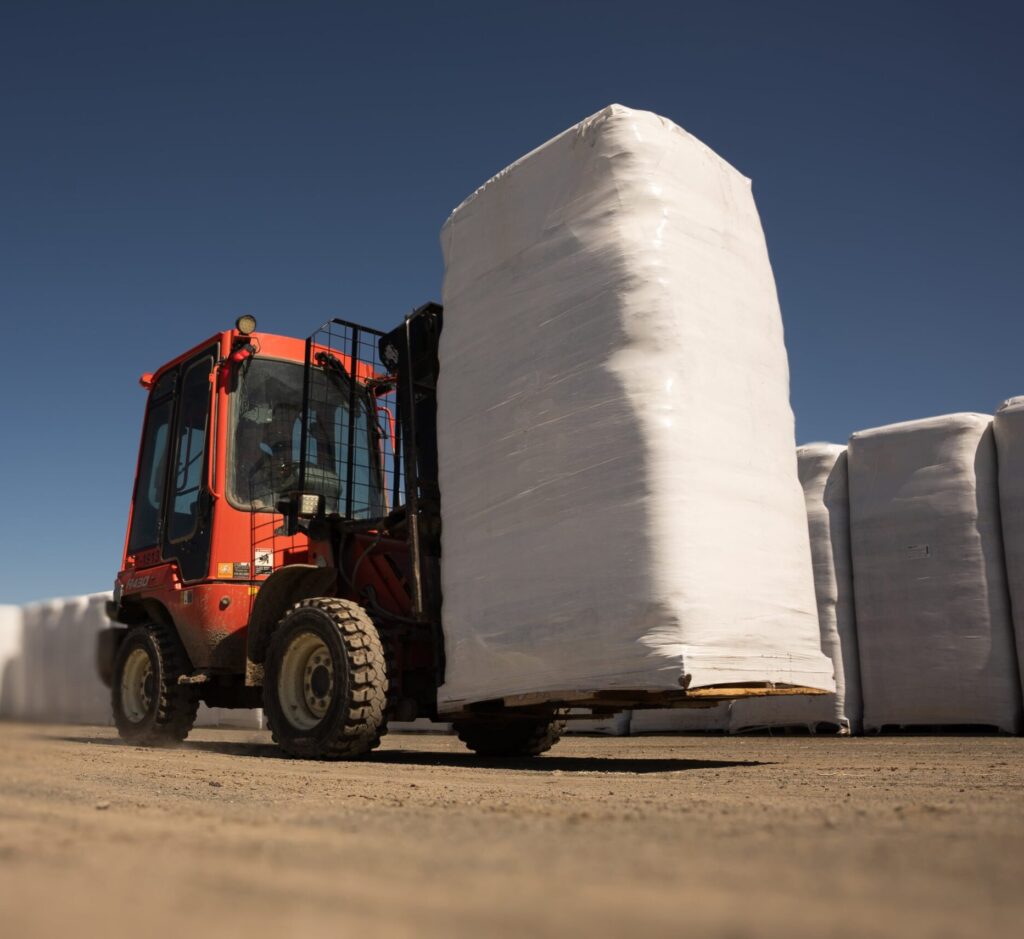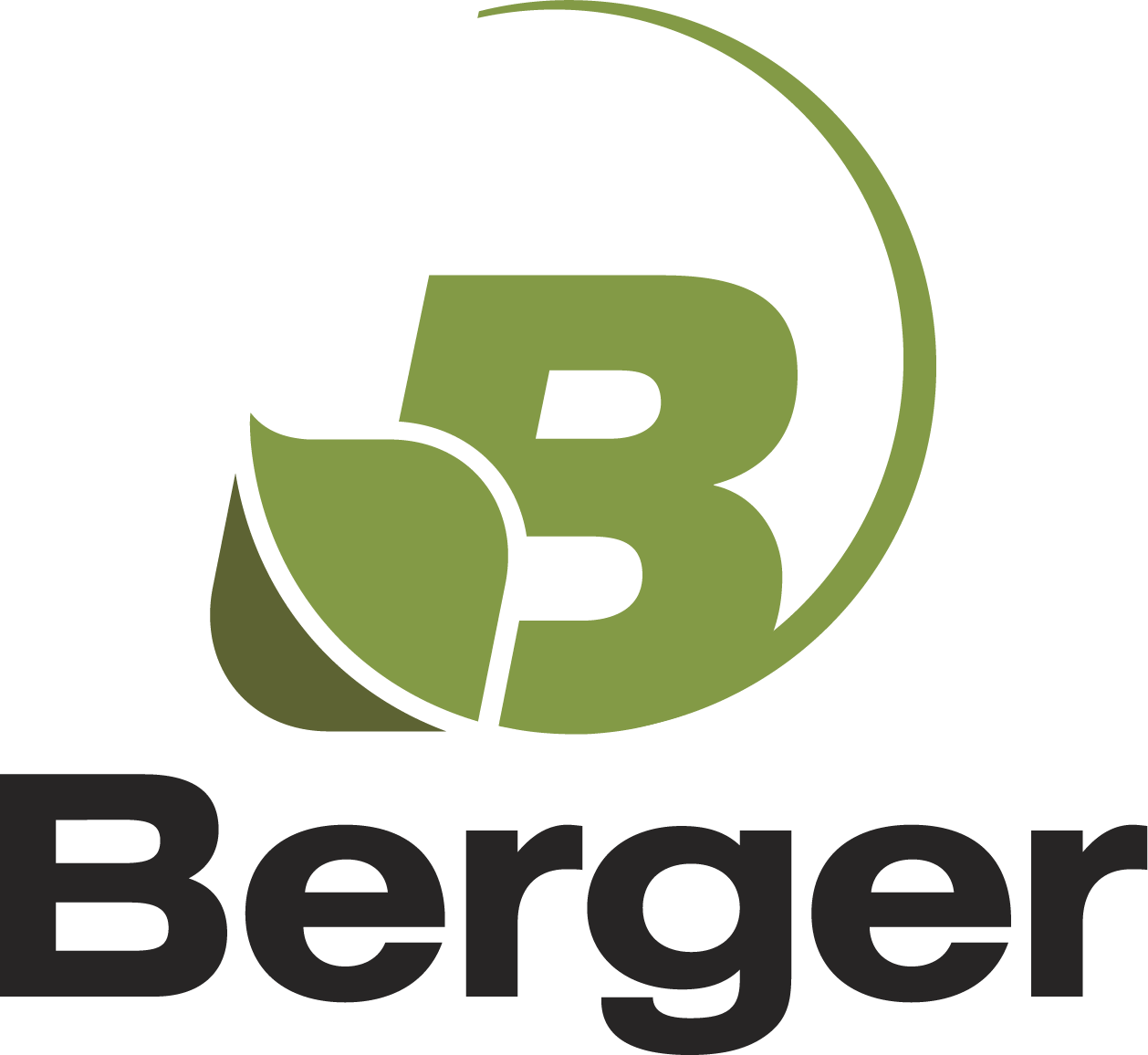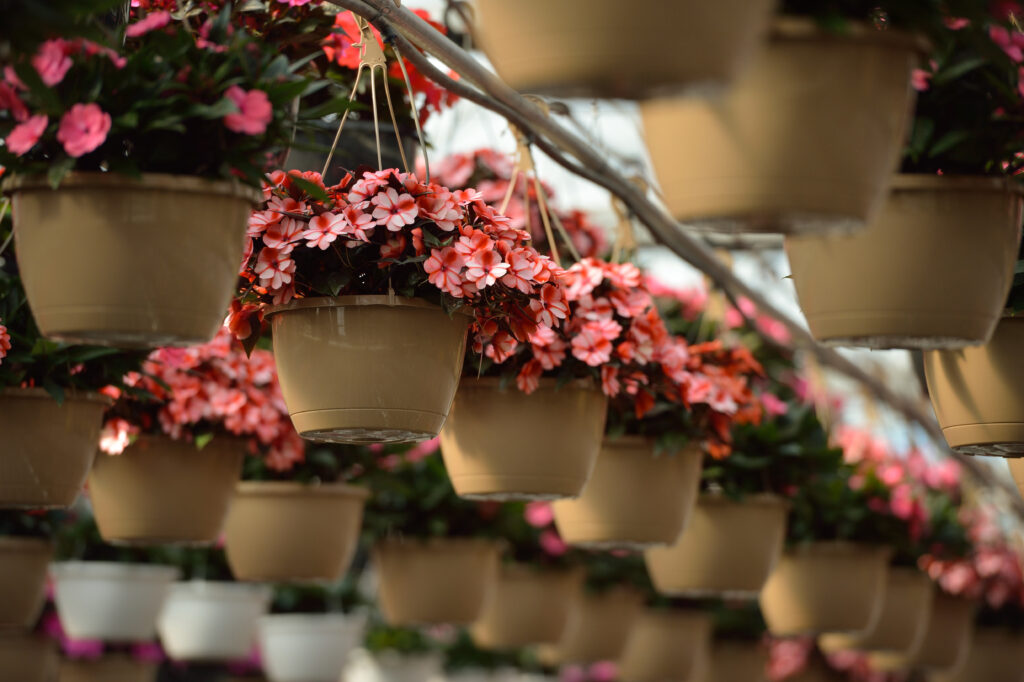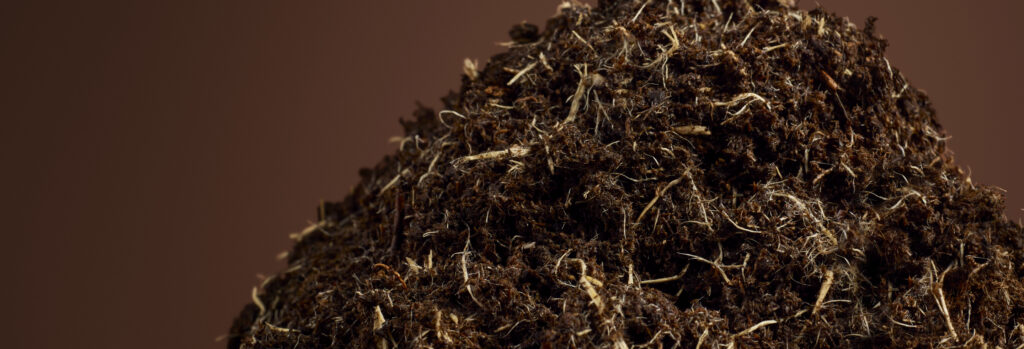How Switching to Compressed Growing Media Pays Off in Volume and Efficiency
By: Pauline Portal, Product Manager
In today’s greenhouse industry, where demand is high and sustainability expectations keep rising, growers are under constant pressure to maximize efficiency. Every input whether it’s labor, water, or growing media affects time saved, crop quality, and yield. One factor that often flies under the radar is how growing media is packaged and delivered. Specifically, compressed mixes offer growers a surprising edge in logistics, growing media volume and overall profitability.
The Compressed Advantage
Compressed growing mixes, particularly in sky-format packaging, are gaining traction for a simple reason: they offer more usable product per shipment, while reducing logistical headaches. Fewer pallets are needed, freight costs go down, and the carbon footprint shrinks. On top of that, sky-format packaging uses significantly less plastic wrap compared to traditional formats.
But compressed growing media isn’t just about shipping more with less. Once properly expanded, these mixes deliver the same structure, porosity, and drainage as their loose counterparts – key attributes for strong root development and early plant vigor. Healthy roots mean better nutrient uptake, stress tolerance, and ultimately, better yields. They also deliver more volume per bale than non-compressed formats once properly hydrated and fully expanded.
Hydration Done Right
To get the full potential of a compressed mix, as mentioned above, proper hydration is essential. Compressed media are shipped at a controlled low moisture content – enough to maintain quality but optimized for transport efficiency. Rehydrating the mix before use allows it to expand to its intended volume, often increasing by 10–15%.
This expansion relies on the natural elasticity of peat fibers, which swell when absorbing water. Proper pre-hydration also reduces airborne dust and ensures uniform moisture throughout the substrate, promoting even crop growth and consistent rooting. Inconsistent hydration can lead to weak zones in trays or water channeling in containers, which directly affects plant quality.

For best results, do the following:
- Loosen the substrate
- Gradually mix in water to reach about 50–60% moisture content, depending on composition of the mix.
- Use mechanical mixers or sprinkler-equipped conveyors for large-scale operations to maintain efficiency and substrate structure.
- Avoid overmixing, which can damage particle integrity and reduce porosity.
Counting What Really Matters: Cost per Usable Volume
Price per skid is often the first number growers look at when purchasing growing media—but it shouldn’t be the last. The true cost of your substrate comes down to how much usable volume you’re getting, not just how much weight is on the pallet.
For example, consider two competitors offering seemingly identical compressed mixes. Competitor A offers a lower price per skid and a heavier pallet. On the surface, this seems like the better deal. However, if that extra weight is simply more water, it reduces the potential expansion of the peat fibers, limiting usable volume. Higher initial moisture content can also increase shipping weight and reduce the number of pallets per truckload costing more in freight.
By measuring the actual expanded volume after proper hydration, growers can calculate the real cost on a $/cu.ft. basis. This often reveals surprising differences. A higher-priced mix that expands more efficiently could offer a lower cost per cubic foot of usable media.
Beyond per-unit costs, these differences have larger-scale implications. If Competitor B’s mix requires fewer truckloads to fill the same number of pots or trays, the savings multiply. For instance, a grower needing to fill 300,000 1-gallon pots might require 10 truckloads of Mix A, but only 8 truckloads of Mix B—saving both on logistics and overall substrate costs.
Cost per cubic foot |
Product A |
Product B |
| Price per skid ($/pallet) | $500 | $550 |
| Average weight per skid (lbs) | 2200 | 2000 |
| Pallets/TL (max 45,000 lbs) | 20 | 22 |
| Average initial moisture content (%) | 56% | 46% |
| Average volume per skid BEFORE initial hydration (cu.ft.) | 197 | 209 |
| Price per cu.ft. ($/lbs) BEFORE initial hydration | $2,54 | $2,63 |
| Gain in volume with initial hydration (% increase) | 3,4% | 12,0% |
| Average volume per skid AFTER initial hydration (cu.ft.) | 203,8 | 234,1 |
| Price per cu.ft. ($/lbs) AFTER initial hydration | $2,45 | $2,35 |
Cost to fill 300K 1gal pots (±40,000 cu.ft.) |
Product A |
Product B |
| Price per truckload ($/TL) | $10 000,00 | $12 100,00 |
| Useable volume per truckload (cu.ft.) | 4075 | 5150 |
| How many truckloads to fill 300,000 1gal pots (±40,000 cu.ft.) | 10 | 8 |
| Final cost | $100 000,00 | $96 800,00 |
–
The Bottom Line: Higher Efficiency, Better Returns
Compressed growing media isn’t just about saving space – it’s about getting more out of every pallet, every tray, and every crop cycle. Compressed formats offer growers a practical way to improve profitability while staying efficient and sustainable.
–
For further information please reach out to Berger’s product team


